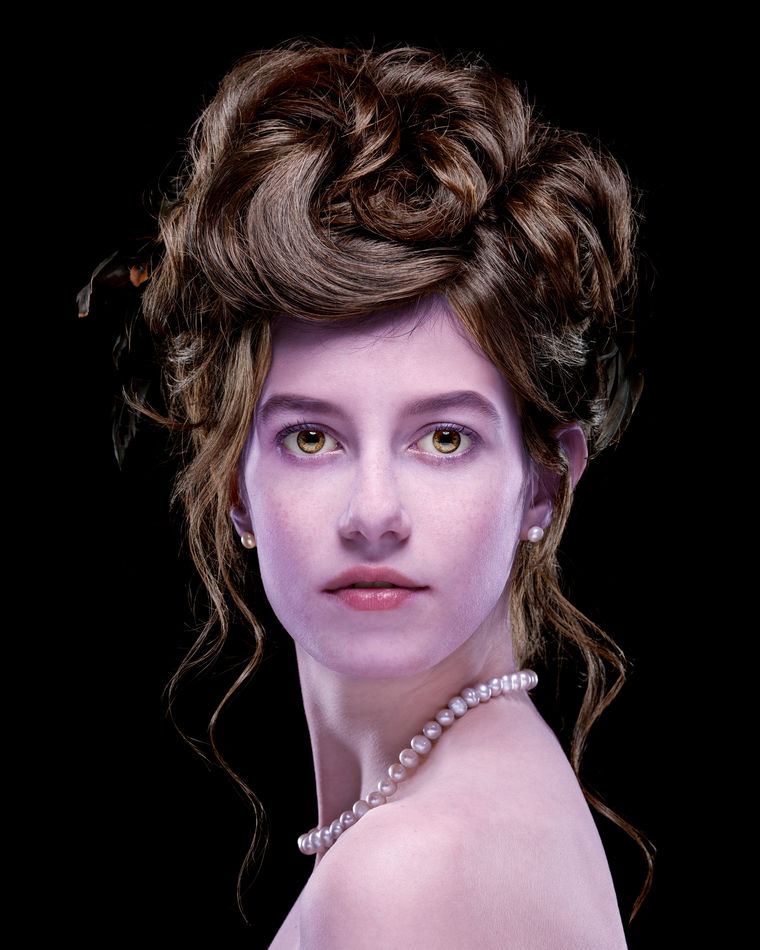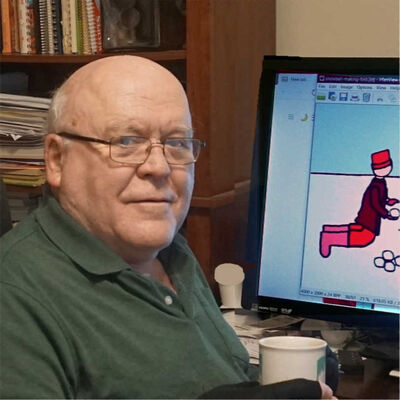Detail in Photographs
Mar 6, 2022 18:35:54 #
kymarto wrote:
I did a series of photos of the aftermath of the Japanese tsunami of 2011........
I'd love to see some of those photos. Are they available to the public?
Mar 6, 2022 21:05:14 #
Ysarex wrote:
Can you sort the two images below? I sized them both to 3400 pixels on the long side (slightly below max resolution for one of them) -- enough to make a very good 16 x 20 print and more than enough for viewing on a typical display.[/b]
The second image is higher resolution and in better focus. Less than 200 dpi would only yield a good 16x20 if viewing distance was not too close.
Mar 6, 2022 21:47:46 #
Ysarex
Loc: St. Louis
tgreenhaw wrote:
The second image is higher resolution and in better focus. Less than 200 dpi would only yield a good 16x20 if viewing distance was not too close.
170 ppi is sufficient for a very good 16 x 20 viewed at an appropriate distance. In the first photo focus is on the center of the bottom anemone -- DOF isn't adequate to extend over all three blooms.
Mar 7, 2022 00:34:27 #
Here is a quick quantitative illustration to address the initial question.
Most magazines require images that are at least 300 dpi. Since an A4 size sheet is a bit under 9 in x 12 in, let's use that size to make things easy. Thus any 2700-pixel x 3600-pixel image will show the same detail as the same photo taken under the same conditions if no AI software is used to upscale any of the photos. Thus, any photo over 2700 x 3600 = 9.72 MP is wasted in the ideal situation. However, quite often images will be downsized to improve photo quality, so the extra pixels are not wasted. --Richard
Most magazines require images that are at least 300 dpi. Since an A4 size sheet is a bit under 9 in x 12 in, let's use that size to make things easy. Thus any 2700-pixel x 3600-pixel image will show the same detail as the same photo taken under the same conditions if no AI software is used to upscale any of the photos. Thus, any photo over 2700 x 3600 = 9.72 MP is wasted in the ideal situation. However, quite often images will be downsized to improve photo quality, so the extra pixels are not wasted. --Richard
Mar 7, 2022 08:56:20 #
There is a misconception that anything more than 170 or 300 dpi is wasted when printing. This is not necessarily true depending on how the images is viewed or printed. Your input resolution should be at least the same or in some cases twice the output resolution to get the highest possible quality
If you are viewing on a 65inch 4k monitor, or many other standard monitors, the resolution is roughly 72dpi. Higher resolution images will not benefit much. Onscreen viewing on today's monitors generally won't benefit much from having more than 3840 x 2160 pixel, 6.7 megapixels.
Most ink jet printers including those used for high quality metal prints get only a minimal benefit from higher resolutions and 170 dpi is enough, 300 dpi is ideal and more is almost never beneficial at all.
When mass printed using offset lithography, RGB images are converted to CMYK and then printed using halftone dots. At the lowest end, 65 line per inch are used in B&W newspapers with 85lpi being more common. Color newspapers use 120 lpi. Magazines use 150 and 175 lpi with 175 being more common. When printing with halftone dots, you must have at least twice the input resolution as the halftone line screen or you will see artifacts like a moiré and other undesirable technical issues. For this reason, if your images are ever to be printed in a magazine, you will want at a minimum 300 or 350 dpi. When an image contains hard edges and line art components, they benefit from higher resolution up to maybe 600 dpi. Lower resolutions will show stair steps on these high contrast boundaries.
Having a decade of prepress experience preparing thousands of high quality magazine ads, being an engineer on a design team for prepress equipment, having used Photoshop since version 1.0, and being a software developer specializing in graphics has taught me a thing or two on this subject :-)
If you are viewing on a 65inch 4k monitor, or many other standard monitors, the resolution is roughly 72dpi. Higher resolution images will not benefit much. Onscreen viewing on today's monitors generally won't benefit much from having more than 3840 x 2160 pixel, 6.7 megapixels.
Most ink jet printers including those used for high quality metal prints get only a minimal benefit from higher resolutions and 170 dpi is enough, 300 dpi is ideal and more is almost never beneficial at all.
When mass printed using offset lithography, RGB images are converted to CMYK and then printed using halftone dots. At the lowest end, 65 line per inch are used in B&W newspapers with 85lpi being more common. Color newspapers use 120 lpi. Magazines use 150 and 175 lpi with 175 being more common. When printing with halftone dots, you must have at least twice the input resolution as the halftone line screen or you will see artifacts like a moiré and other undesirable technical issues. For this reason, if your images are ever to be printed in a magazine, you will want at a minimum 300 or 350 dpi. When an image contains hard edges and line art components, they benefit from higher resolution up to maybe 600 dpi. Lower resolutions will show stair steps on these high contrast boundaries.
Having a decade of prepress experience preparing thousands of high quality magazine ads, being an engineer on a design team for prepress equipment, having used Photoshop since version 1.0, and being a software developer specializing in graphics has taught me a thing or two on this subject :-)
Mar 7, 2022 09:27:54 #
CHG_CANON wrote:
If in my heart I know there's a difference, I will never be able to go with the lower resolution.
So when you are moving to medium format?
Mar 7, 2022 09:30:59 #
sippyjug104 wrote:
When it comes to evaluating the cameras only, my take on it is that the sensor is an analog device and it takes an analog-to-digital microprocessor to convert that signal for all of the "in camera" processing including that of the RAW format (which is a digital file).
So...is the resulting image we see really a sole function of the sensor or is it impacted by how the camera's microprocessor and firmware process that analog signal which is different from camera to camera?
So...is the resulting image we see really a sole function of the sensor or is it impacted by how the camera's microprocessor and firmware process that analog signal which is different from camera to camera?
Yes.
Mar 7, 2022 09:33:27 #
larryepage wrote:
This is based on experience. Saturatuin, sharpness... (show quote)
Larry how many camera brands have you tested?
Mar 7, 2022 09:34:54 #
DirtFarmer wrote:
If you had been shooting raw, none of those settings would have mattered at all.
Not relevant since the discussion is about the JPEG output.
Mar 7, 2022 09:37:07 #
Mar 7, 2022 09:38:37 #
JD750 wrote:
Not relevant since the discussion is about the JPEG output.
I did not see any mention of raw/jpg in the first post of this thread.
Mar 7, 2022 09:42:28 #
Ysarex wrote:
170 ppi is sufficient for a very good 16 x 20 viewed at an appropriate distance. In the first photo focus is on the center of the bottom anemone -- DOF isn't adequate to extend over all three blooms.
Exactly!! And viewing distance does matter. If you get close enough to a 4k screen you can see the individual pixels but you don’t view it that close when watching a movie.
Mar 7, 2022 09:49:52 #
Thank you tgreenhaw for bringing "clarity" to this issue...
Camera vendor's would love to have its target audience believe it's paramount to purchase more high end kit than necessary. The Lion's share of my clients are elated with my deliverables even though I'm using a 14 year old 24 mega pixel Nikon D3x. In my studio at ISO 100 it still is very competitive with current offerings... While I have a Nikon D810 I only use it to shoot league soccer to allow for more aggressive cropping. In this scenario it is appropriate and germane to the task of exceeding client expectations.
As the late great Dean Collins said: "Beauty is in the eyes of the checkbook holder"
For those who actually work in the industry nothing else really matters.
Cheers! Thomas
Camera vendor's would love to have its target audience believe it's paramount to purchase more high end kit than necessary. The Lion's share of my clients are elated with my deliverables even though I'm using a 14 year old 24 mega pixel Nikon D3x. In my studio at ISO 100 it still is very competitive with current offerings... While I have a Nikon D810 I only use it to shoot league soccer to allow for more aggressive cropping. In this scenario it is appropriate and germane to the task of exceeding client expectations.
As the late great Dean Collins said: "Beauty is in the eyes of the checkbook holder"
For those who actually work in the industry nothing else really matters.
Cheers! Thomas
Nikon D3x albeit it is actually the team i.e. Hair Stylist; Makeup Artist; Wardrobe Stylist that deserve all credit... and yes this very young commercial model with over 24K IG followers

(Download)
Mar 7, 2022 10:03:34 #
Ysarex
Loc: St. Louis
tgreenhaw wrote:
br When mass printed using offset lithography, RG... (show quote)
You're describing a legacy process from the previous century. Press plates made using line screens that can potentially cause moiré interference etc. is an issue that went away last century when we moved to direct computer-to-plate technology. The computer can generate a stochastic dot pattern that reduces the previous requirement for excess resolution to address problems that arose from using halftone line screens.
Mar 7, 2022 10:11:37 #
I always - A - L - W - A - Y - S - get very suspicious of anyone talking about 'dots' in a pixel-based world ...
If you want to reply, then register here. Registration is free and your account is created instantly, so you can post right away.



